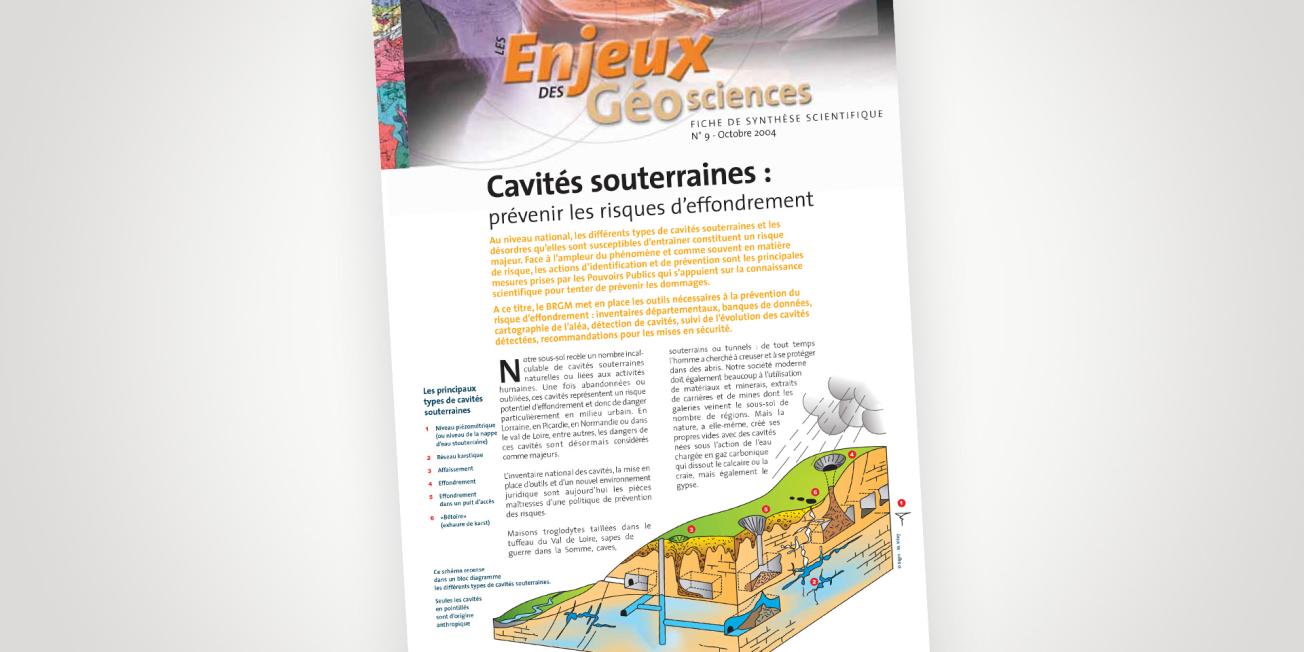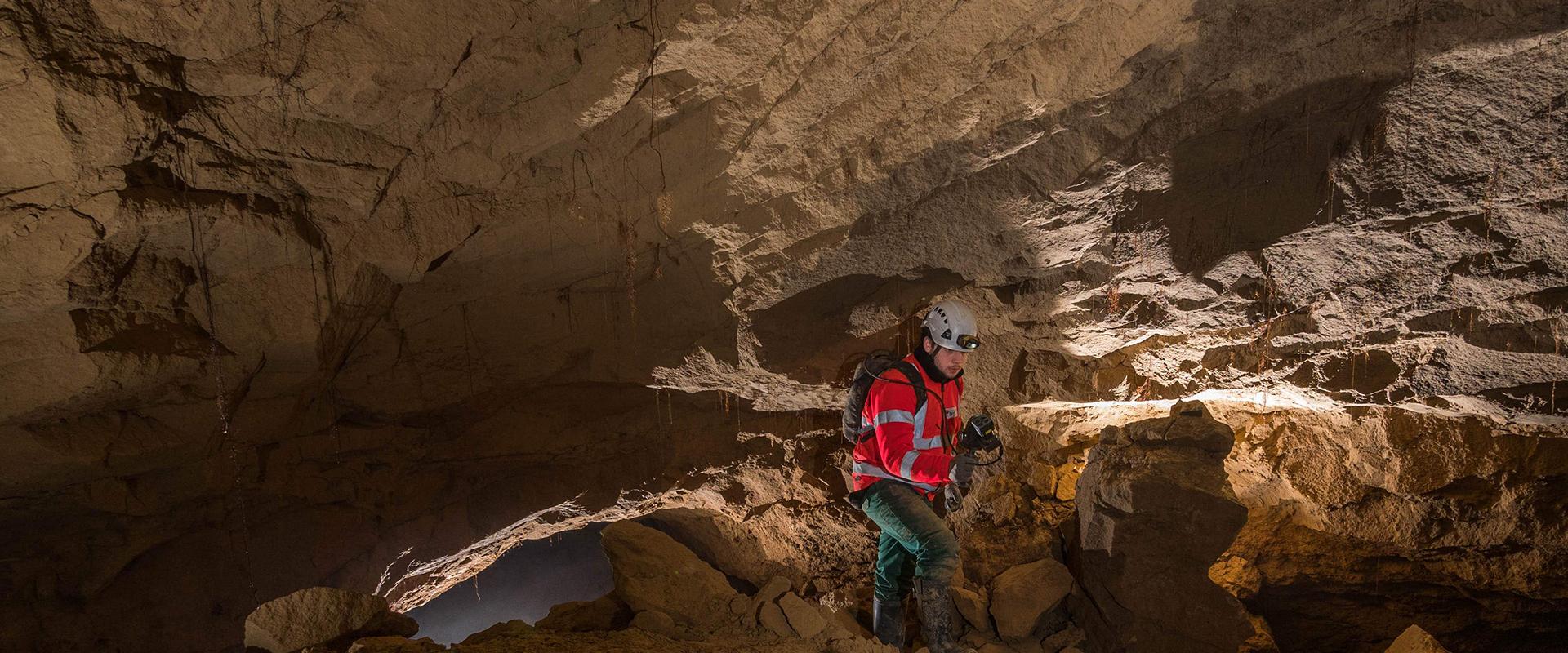
Cover of the thematic file.
© BRGM
Different types of underground cavity
Our subsurface conceals countless natural and man-made underground cavities. Once abandoned or forgotten, these cavities represent a potential risk of collapse and are therefore a danger, especially in urban areas. In Lorraine, Picardy, Normandy or the Loire Valley, among other regions, these cavities are now considered to be a major risk.
France’s risk prevention policy is now based on a national inventory of cavities, the implementation of tools and a new legal environment.
Whether in cave dwellings carved out of the tufa rock of the Loire Valley, wartime undermining in the Somme, cellars, underground passages and tunnels, people have always sought to dig and seek protection in underground shelters. Our modern society also owes much to the use of materials and minerals, extracted from quarries and mines whose galleries have veined the subsurface of so many regions. But Nature itself has created its own voids with cavities created by the action of water containing carbon dioxide, which dissolves limestone or chalk, but also gypsum.
In total, it is estimated that there are approximately 500,000 underground cavities throughout France. Some are completely harmless, while others represent a potential danger with risks of subsidence, cave-in or collapse. Such incidents are often spectacular but also dangerous for life and property. The subsidence that occurred in the eastern coalfields of France in 1996, shortly after their closure, reminds us that the danger is real and that it has considerable socio-economic costs and consequences.







